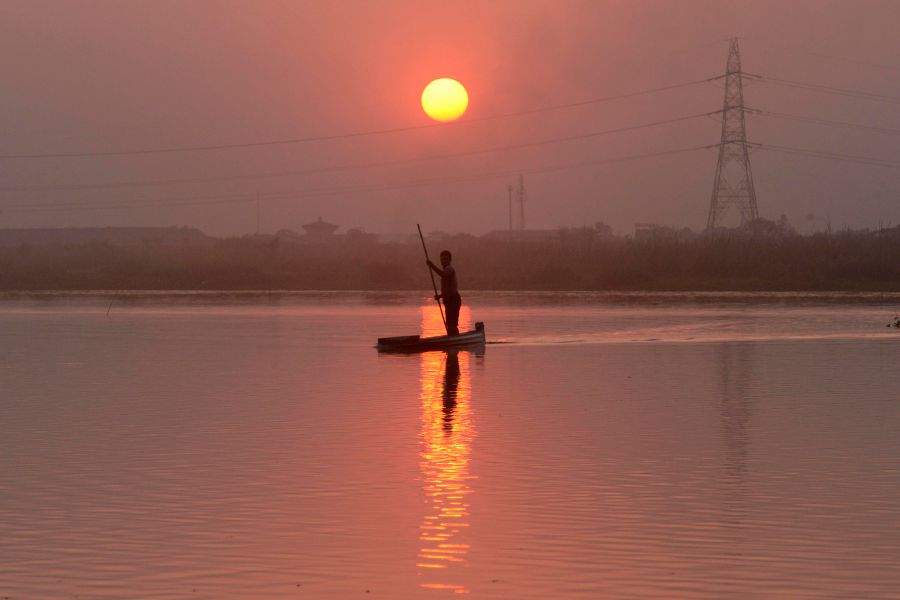IN strikingly blunt remarks last week, United Nations Secretary-General Antonio Guterres said humans were waging a "suicidal war" on planet Earth. He warned that unless efforts were stepped up, the fires, floods and cyclones causing widespread problems in recent times will become the "new normal".
In a BBC interview, he warned that nature always strikes back "with gathering force and fury", and called on nations to coalesce around a goal of reducing greenhouse gas emissions to net zero.
He also underscored the biodiversity crisis, often called the flip side of the climate crisis coin. Indeed, the need to address the climate and biodiversity crises with an integrated approach was underlined in a recent report by the UN Environment Programme's World Conservation Monitoring Centre (UNEP-WCMC).
That report also detailed why contributions of nature or nature-based solutions (NbS) deserve a more central place in policy-making to reverse climate change and biodiversity loss.
Caring for ecosystems represents an opportunity for mutual benefits from carbon sequestration and storage, biodiversity conservation and sustainable use.
Co-benefits are most likely to be achieved where integrated and holistic approaches to biodiversity loss and climate change are implemented.
Many activities that are undertaken with the primary aim of meeting the objectives of biodiversity conservation have significant potential to contribute to the mitigation of climate change.
A year from now, the world will have two major opportunities for pivotal decision-making in this regard:
The first is a meeting of the UN Convention on Biological Diversity (CBD, COP15) in Kunming, China, where parties will be asked to formally adopt a post-2020 Global Biodiversity Framework — something akin to the 2015 Paris climate agreement.
The second is a meeting of the UN Framework Convention on Climate Change (UNFCCC, COP26), in Glasgow, the United Kingdom, where parties will focus on five key areas identified for particular attention on the climate change front, one of which is NbS.
Both were delayed by the Covid-19 pandemic — a mixed blessing, as they will now take place with a strengthened understanding and appreciation of the fundamental links between the health of the natural world, human health and economic wellbeing.
Positive outcomes at COP15 and COP26 can speed up the action and investments needed to generate clean jobs and potentially unlock trillions of dollars in new business opportunities.
The UNEP-WCMC report also identified where global action to achieve post-2020 biodiversity conservation goals could deliver the greatest contribution towards mitigating climate change.
It showed that the strategic choice of areas to be managed for conservation being increased to 30 per cent of land globally could prevent more than 500 gigatonnes of carbon from entering the atmosphere, further amplifying the greenhouse effect.
According to the report, taking account of biodiversity and carbon together can secure 95 per cent of the biodiversity benefits and nearly 80 per cent of the carbon stock that would be obtained by priorities that were based on either value alone.
It cites examples of the most important regions in which we should prioritise nature-based climate solutions, which include Brazil's Atlantic forest and Central America, large parts of the Mediterranean, Southeast Asia, the West African coast, Papua New Guinea, and the East Australian rainforest.
Other areas with vast amounts of carbon include the lowlands south of Hudson Bay in Canada, the Amazon rainforest and the Congo basin.
The report highlighted the usefulness of novel multi-criteria optimisation tools to guide decisions on where to implement NbS in order to maximise benefits for the two objectives.
Such information can make a vital contribution to helping decision makers move from aspirations to ambitious and effective policies and concerted efforts to meet international commitments.
It can also inform the inclusive decision-making processes involving indigenous peoples, local communities and other stakeholders that are crucial to operationalising effective NbS.
It is obvious that there are potentially huge economic gains to be made when shifting towards a nature-positive economy.
According to a World Economic Forum report, The Future of Nature and Business which was released last summer, transitioning towards a sustainable economy could create 395 million jobs by 2030 and generate US$10.1 trillion in business opportunities.
Guterres's warning should be seriously heeded and these numbers carefully scrutinised by political leaders and policymakers looking to safeguard our long- term future, and in the short term to create new jobs and sources of income in challenging times.
The writer is Ambassador and Science Adviser to the Campaign for Nature; Chairman of the Business Council on Sustainable Development, Malaysia; and Senior Fellow, Academy of Sciences Malaysia






